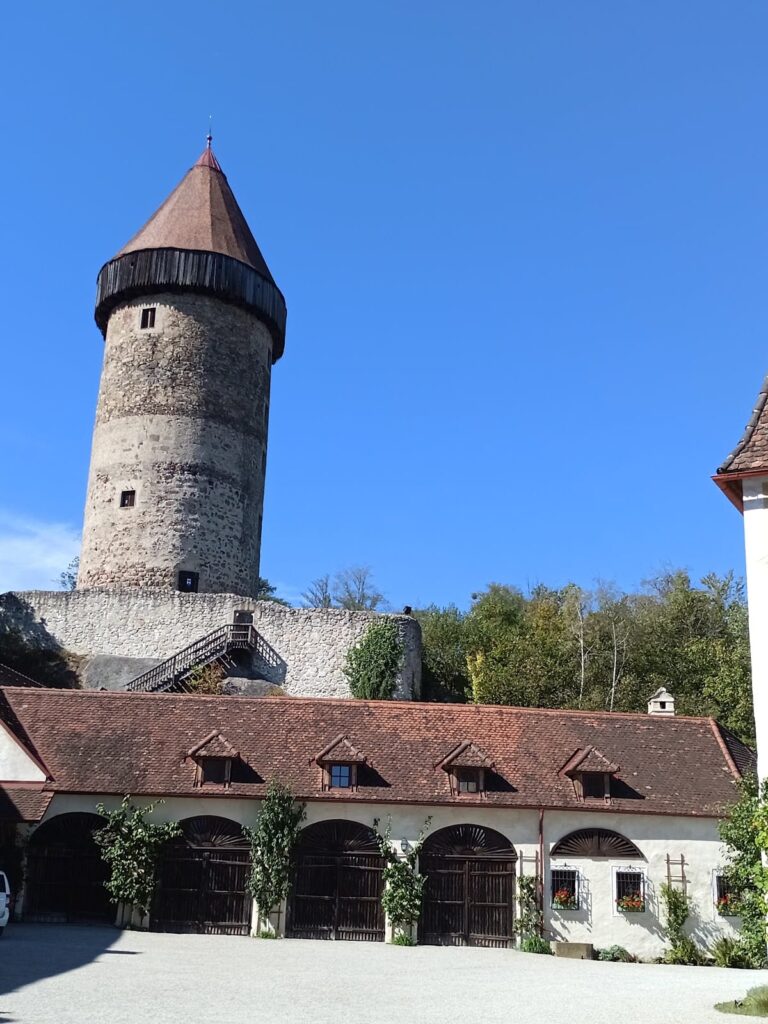Burg Clam: A Historic Castle in Upper Austria
Visitor Information
Google Rating: 4.8
Popularity: Medium
Google Maps: View on Google Maps
Official Website: www.burgclam.com
Country: Austria
Civilization: Medieval European
Remains: Military
History
Burg Clam is located in Klam, Upper Austria, and was established in 1149 by Walchun von Machland. Walchun was the brother of Otto von Machland, a founder of several monasteries. The castle initially belonged to the Machland family before passing through various noble houses, including the Velburg, Holzer, Hauser, Zinzendorf, Wolfstein, Seusenecker, and Prüschenk families. Eventually, it came under the ownership of the Clam-Martinic family, who have maintained possession for 24 generations.
From the 13th to the 15th centuries, Burg Clam functioned as a sovereign fief. It played a role in regional conflicts, such as the Fifth Crusade, during which Ulrich von Clam-Velburg died in 1218. The castle successfully resisted the Hussite invasions in 1422 and endured a siege by Hungarian forces in 1487. These events highlight its strategic importance in medieval military affairs.
The 14th century saw significant construction, including the addition of a prominent round tower. Later, in the late 16th century, the castle underwent remodeling that introduced Renaissance architectural elements. A major transformation occurred in 1636 under Johann Gottfried Perger, who converted Burg Clam into a Renaissance residence. Perger also contributed to local infrastructure by building a church, an aqueduct, and a hospital, reflecting the castle’s role beyond military defense.
In 1640, the Perger family adopted the name von Clam. By 1642, the castle ceased to be a feudal holding and became private property. The family was elevated to barons in 1655 and later to counts in 1759 by Empress Maria Theresa. After the Clam-Clam line ended in 1815, the Clam-Martinic branch inherited the estate. Among its notable members was Heinrich Clam-Martinic, who served as the last prime minister of the Austro-Hungarian monarchy.
Burg Clam has never been destroyed despite enduring wars and occupations. It suffered minor damage during the Napoleonic wars and escaped significant harm during the Soviet occupation after World War II. Restoration efforts have taken place periodically, especially between 1636 and 1990. A plaque commemorates Freiherr Johann Franz von Clam, who died fighting the Turks in 1691. The castle also preserves family arms, historical artifacts, a regimental flag, and items linked to Archduke Franz Ferdinand’s world trip in 1892–1893.
Remains
Burg Clam is situated on a wooded spur overlooking the Danube plain, protected by steep terrain on three sides. The castle complex is arranged around three courtyards, combining medieval and Renaissance architectural styles. Its most striking feature is a 43-meter-high round Romanesque tower from the 13th century, topped with a wooden crenellated parapet and a conical roof covered in wooden shingles.
The outer courtyard contains agricultural buildings, offices, stables, and carriage houses. Access to the middle courtyard is through a Renaissance gate dated 1636. This courtyard is bordered on the south by a five-story rectangular palace originally built around 1300 and remodeled in the late 16th century. The palace features Renaissance windows and interiors, with large halls on the upper floors that have wooden coffered ceilings and Renaissance portals. The fifth floor houses a Romanesque chapel consecrated in 1360, notable for 14th-century frescoes influenced by Bohemian art. These frescoes, uncovered fully by 1951, depict religious scenes such as Christ on the Mount of Olives and the Annunciation.
The southern wing of the second courtyard includes the “Landscape Hall,” decorated in 1803 with dry paintings showing idealized views of regional castles. The innermost courtyard is surrounded by irregular three-story arcades built in 1581. These arcades feature semicircular arches on heavy stone pillars at ground level and Tuscan columns above, with brick parapets and ribbed vaults.
East of the residential tower, above a steep slope leading to the Klammbach stream, stands a late Gothic family chapel dedicated to the Holy Cross. This chapel is architecturally notable for its narrow, high interior with three small naves that expand near the altar. The polygonal choir is illuminated by three pointed-arch windows. Ribbed vaults rest on granite pillars, and richly decorated keystones adorn the ceiling. The altar dates to 1631 and is accompanied by four large panel paintings by Christoph Fuchs.
The castle pharmacy features a late Gothic ribbed vault supported by a central round column. It contains two large early 17th-century pharmacy cabinets set into wall niches. The internal gate tower, topped with a Baroque onion dome, marks a later architectural addition.
Burg Clam’s museum holds furniture and paintings spanning the 15th to 20th centuries, a collection of family weapons, archival documents, and rare 18th-century porcelain from Meissen, Nymphenburg, and Augarten. Personal items include the work chair of Christoph II Perger, covered with the hide of his favorite horse.
Additional buildings on the site include the 1648 Meierhof, which houses the castle tavern, and a riding hall operated by the local equestrian club. A historic brewery remains active on the grounds. The castle is protected as a cultural monument under Austrian law, ensuring the preservation of its extensive historical and architectural heritage.










